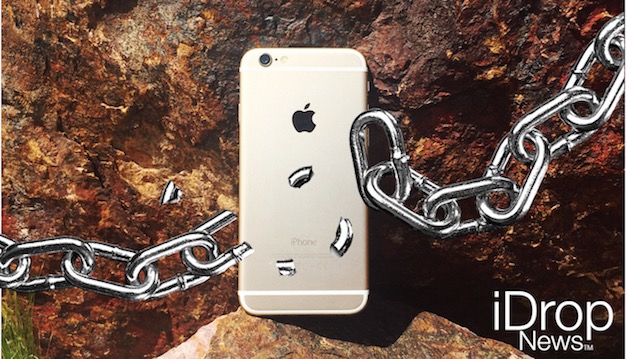Jailbreak 101: Set Your iPhone Free

Toggle Dark Mode
Have you ever wanted to change the way iOS looks? Have you ever wanted to perform functions on your iPhone that were seemingly restricted by Apple? Maybe you’re just bored of your iPhone and want to change it up for fun. If any of this sounds like you, a Jailbreak could be exactly what you’re looking for.
Jailbreaking is a term you might have heard before. Not totally mainstream, Jailbreaking is a relatively underground practice, typical of hackers and computer aficionados. Slowly but surely, the iOS freeing phenomenon is becoming more popular amongst average users. Online help guides and safety assurances are giving people more confidence in the once sketchy practice.
What is Jailbreaking?

Jailbreaking is the process of removing the software restrictions that are placed on your iPhone. Jailbreaking breaks into a tiny security flaw, found by the Jailbreaking hacker community, and installs a new app store called “Cydia.” The presence of Cydia on your iPhone means that your phone has been successfully Jailbroken, and you can now bypass Apple’s restrictions.
Why would I want to Jailbreak my iPhone?
When we say you can bypass Apple’s restrictions, we mean almost all of them. You now have access to a mass quantity of new, unofficial, and downright cool apps that you can’t get on the official App Store. These apps can allow you to do anything from customizing your iPhone’s icons, changing up the functionality of control center, and even access unlimited Wi-Fi tethering for one flat rate.
Jailbreaking your phone can also provide you with various security enhancements. One application found on Cydia acts as a firewall and can block specific apps from using your private data without your knowledge. Other Cydia apps like BioLockDown will use your built in Touch ID fingerprint to secure chosen apps from nosy people.
Jailbreaking your iPhone is also perfectly legal. Some of the apps within Cydia are not, however. Anything that simply customizes your iPhone to your liking is perfectly safe, according to the law. Be warned, if you do decide to Jailbreak your iPhone, it WILL void your warranty. If you’re the type of person who sees value in your iPhone’s warranty, do not Jailbreak your iPhone.
How do I Jailbreak my iPhone?
Jailbreaking can often be a lengthy process and often requires multiple attempts. Newer versions of iOS can’t often be Jailbroken. This is because the security exploit, the route that allows Cydia to work, has not yet been identified.
Older versions of iOS can be found online. These older iOS files can be downloaded and reinstalled on your iPhone. After the older iOS is installed, the corresponding Jailbreak version can be downloaded.
There are two different types of Jailbreaks, which are usually dependent on the age of the OS. Untethered Jailbreaks are ideal, but are not usually available for newer versions of iOS. Note the difference between a tethered and un-tethered Jailbreak below.
Tethered: USB Cable Required
With a “tethered” jailbreak, a computer is needed to turn the device on each time it is rebooted. Even if the device restarts by itself, it will no longer have a patched kernel, and it may get stuck in a partially started state. By using a computer, the phone is essentially “re-Jailbroken” (using the “boot tethered” feature of a Jailbreaking tool) each time it is turned on. With a tethered Jailbreak, you can still restart SpringBoard on the device without needing to reboot.
Untethered: No USB Cable Required
An “untethered” jailbreak has the property that if the user turns the device off and back on, the device will start up completely, and the kernel will be patched without the help of a computer – thus enabling the user to boot without the need to use a computer. These jailbreaks are harder to make and take a lot of reverse engineering and years of experience.
If you do decide to Jailbreak your iPhone, back-up your iPhone with iTunes FIRST.
iDrop is certainly in the business of helping people. However, we will not directly provide directions to Jailbreak your phone due to its potentially harmful nature. If you wish to Jailbreak your iPhone, doing a simple Google search of “Jailbreak iOS Directions” should give you the results you need.
How do I un-Jailbreak my phone?
You might have Jailbroken your iPhone and realized that it wasn’t exactly what you were hoping for. Luckily, restoring your iPhone back to normal is easy.

- Make sure you backed-up your iPhone before you Jailbroke!
- Connect your iPhone to your computer via the USB cable.
- Using iTunes, click your iPhone’s summary tab.
- Click restore iPhone.
- Click restore again to confirm.
Jailbreaking can take some time and patience, but more often than not it’s worth the effort. Jailbreaking your iPhone can take iOS to a different level that you might have not expected. While Jailbreaking your iPhone can be totally awesome, a positive experience is not always guaranteed. Take caution, do research, BACK-UP YOUR iPhone, and then decide if Jailbreaking is right for you.
[socialpoll id=”2276538″]






